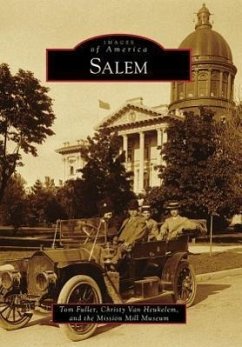Long before the city of Salem got its name, the lush valley was a favorite winter camping location for the Kalapuya tribe. Jason Lee first ventured to Oregon in 1834, at the invitation of Northwest tribes, creating a mission and a settlement here. Native Americans called it aChemeketa.a William H. Willson, who laid out the city plan in 1851, called it aSalem.a Both words mean apeace.a Salemas central location, in the middle of the Willamette Valleyas agricultural belt, made it an ideal location for the new capital of Oregon. Since then, Salemas character has largely been influenced by the presence of woolen mills, crop production, and many state institutions. Surviving devastating floods and fires in all three state capitol buildings, Salem and its people have a history of resilience, leadership, and public service.
Bitte wählen Sie Ihr Anliegen aus.
Rechnungen
Retourenschein anfordern
Bestellstatus
Storno

